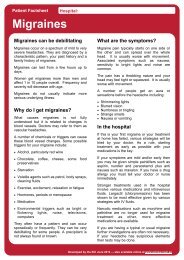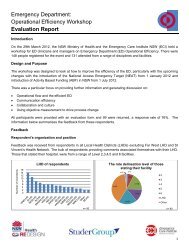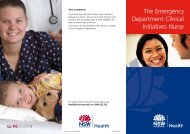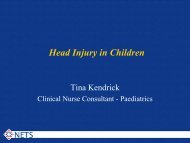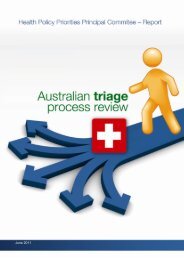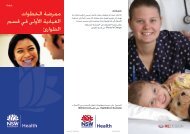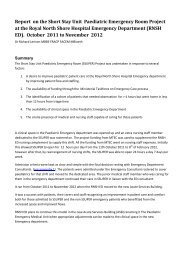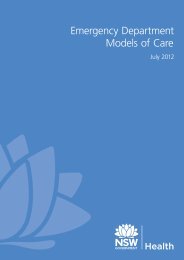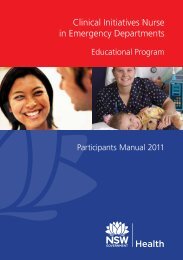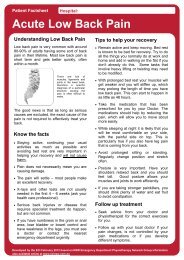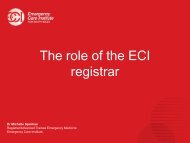Facilitators Manual - Emergency Care Institute
Facilitators Manual - Emergency Care Institute
Facilitators Manual - Emergency Care Institute
You also want an ePaper? Increase the reach of your titles
YUMPU automatically turns print PDFs into web optimized ePapers that Google loves.
FACILITATORs’ <strong>Manual</strong> Transition to <strong>Emergency</strong> NursingSuggested Modalities• Self Directed Learning.• Modified lecture.• Demonstration.• Simulation.• Role play.• Case Studies.• Experiential Learning.Facilitator ActivitiesThe following activities have been designed to further develop participant knowledge of respiratoryassessment and associated nursing interventions. The facilitator may use any, or all of the outlinedactivities to achieve the modules aim. Alternatively facilities may choose to use other outlined modalities.<strong>Facilitators</strong> may incorporate a number of activities together (skills stations) or alternatively conductactivities separately.36Option 1: Role Play• Participants are broken up into pairs. Each participant is required to ausculate their partner, listeningfor normal breath sounds, and states their findings. On completion of the exercise participants aredebriefed and an opportunity for feedback provided.• Participants are broken up into pairs. Each participant is given a case history inclusive of diagnosisand relevant treatment options. Their partner is required to take a comprehensive medical historyand institute required nursing treatments – roles are then reversed, participants are debriefed and anopportunity for feedback provided.Option 2: Simulation• Participants are required using a simulation mannequin to identify adventitious breath sounds anddiscuss with the facilitator their findings.• Using a simulation mannequin participants demonstrate head tilt, chin lift, jaw thrust, and insertionof airway adjuncts.Option 3: Auscultation LibraryThis self directed learning opportunity allows the participants to hear adventitious breath soundswhilst reading easy to read resource material.http://www.cvmbs.colostate.edu/clinsci/callan/breath_sounds.htmOption 4: Case StudiesParticipants are divided into small groups and are given several case studies. Within the case studiesparticipants are required to;• Identify the clinical indicators of urgency and identify appropriate nursing interventions.• Analyses ABGs.• Identify appropriate oxygen delivery device and provide rationale for its useExpected Timeframe: Eight – sixteen hoursReferences/Resources• American College of Surgeons Committee on Trauma (2008) ‘Advanced Trauma Life Support forDoctors ATLS Student Course <strong>Manual</strong>’ 8th Ed. Chicago• Colleton, L.G (2008) ‘Beyond The Stethoscope: Respiratory Assessment Of The Older Adult’,Nursing Made Incredibly Easy, Sep/Oct 6,5 11-14• Chestnutt, M.S, Gifford, A.H. & Prendergast.T.J (2009) ‘Pulmonary Disorders’ in McPhee, S.J.& Papadakis, M.A. (ED’s) Current Medical Diagnosis and Treatment. McGraw-Hill; USA• Cretikos, M.A., Bellomo, R., Hillman, K. Finfer, S. & Flabouris, A. (2008) ‘Respiratory Rate:The Neglected Vital Sign’, MJA 188(11):657-659.




